Nour Awarkeh
A Novel RIS-Aided EMF-Aware Beamforming Using Directional Spreading, Truncation and Boosting
Jun 14, 2022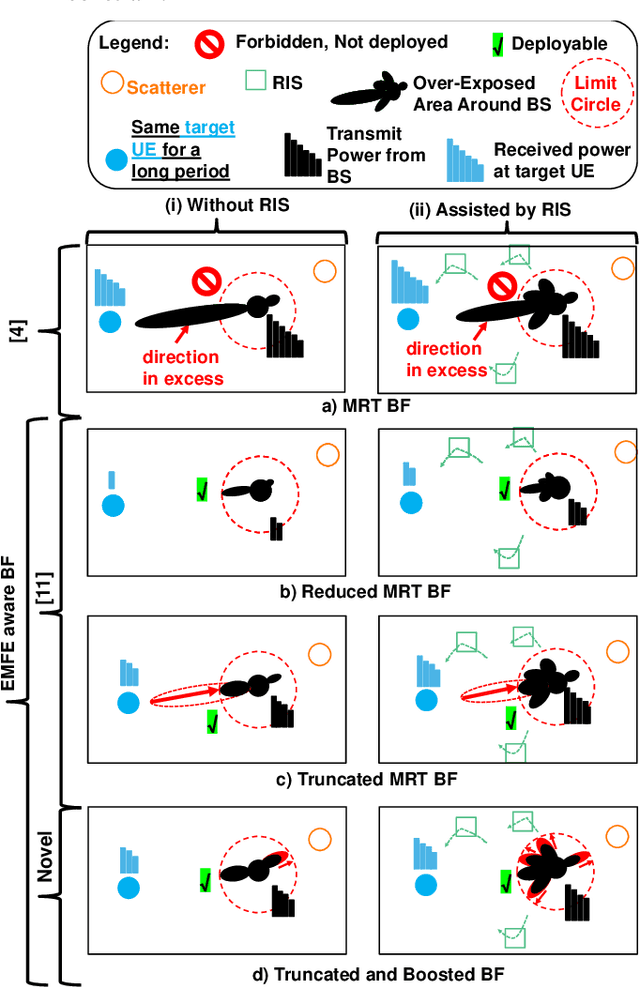
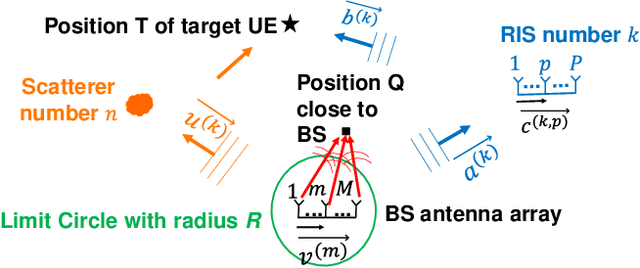
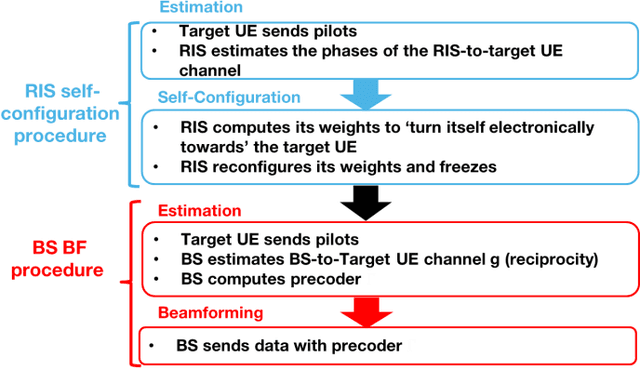
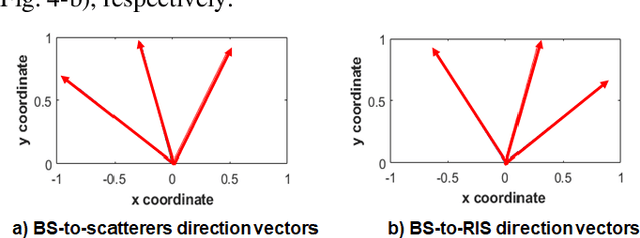
Abstract:This paper addresses a drawback of massive multiple-input multiple-output Maximum Ratio Transmission beamforming. In some propagation conditions, when the base station serves the same target user equipment for a long period, it reduces the transmit power (and degrades the received power) to avoid creating high exposure regions located in the vicinity of the antenna and concentrated in few directions (corresponding to the best propagation paths between the antenna and the receiver). In this paper, we propose a novel electromagnetic field aware beamforming scheme, which (i) spreads the beamforming radiation pattern in the angular domain by adding artificial propagation paths thanks to reconfigurable intelligent surfaces, (ii) truncates the pattern in strong directions, and (iii) boosts it in weak directions. Compared to existing solutions, it maximizes the received power. However, it also consumes more power. Finally, truncation alone is the best trade-off between received power and energy efficiency, under exposure constrain.
A Novel RIS-Aided EMF Exposure Aware Approach using an Angularly Equalized Virtual Propagation Channel
Jun 14, 2022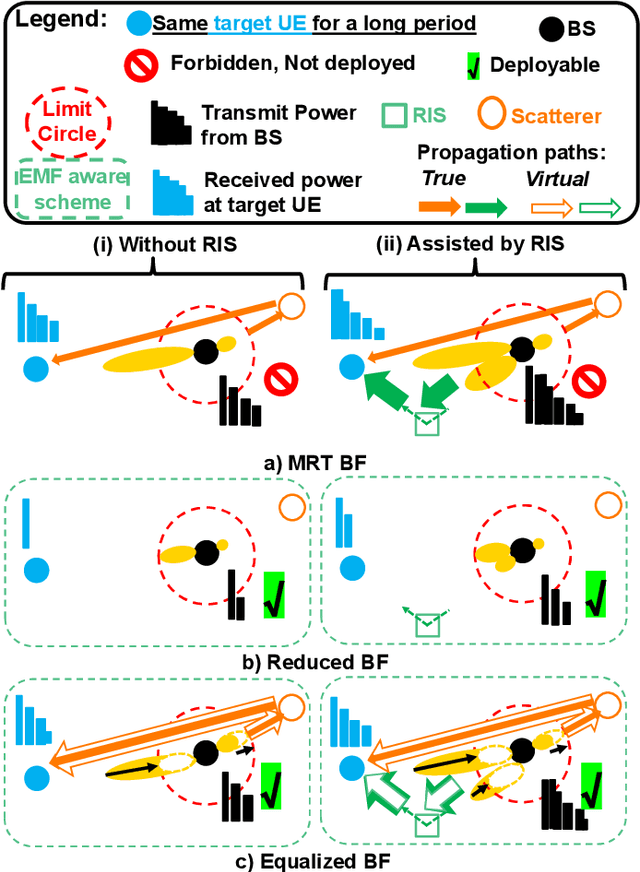
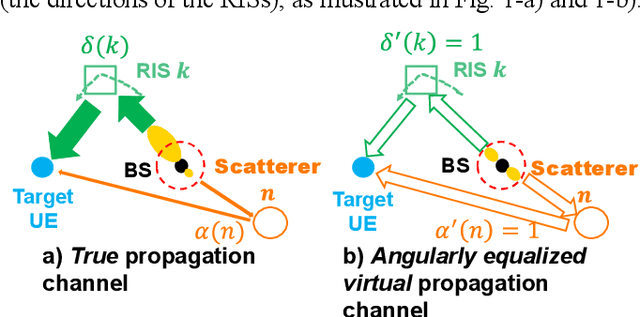
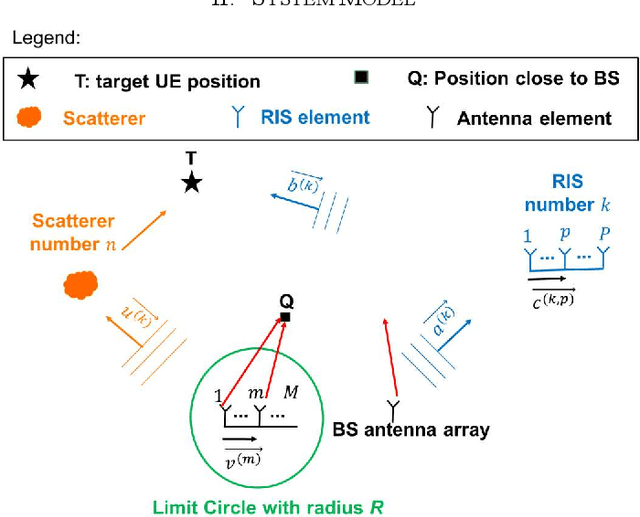
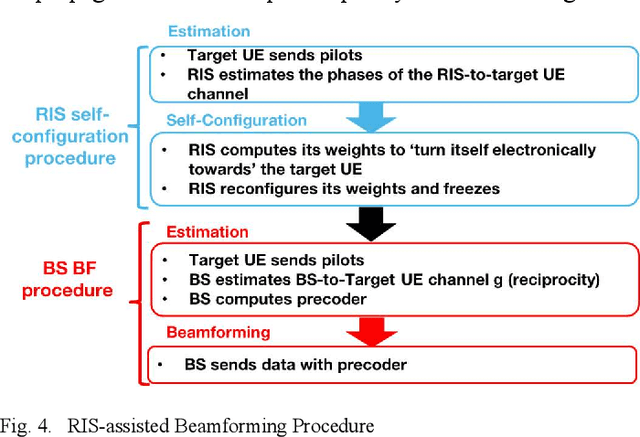
Abstract:Massive Multiple-Input Multiple-Output systems with beamforming are key components of the 5th and the future 6th generation of networks. However, in some cases, where the BS serves the same user for a long period, and in some propagation conditions, such systems reduce their transmit power to avoid creating unwanted regions of electromagnetic field exposure exceeding the regulatory threshold, beyond the circle around the BS that limits the distance between people and the BS antenna. Such power reduction strongly degrades the received power at the target user. Recently, exposition aware beamforming schemes aided by self-tuning reconfigurable intelligent surfaces derived from maximum ratio transmission beamforming, have been proposed: truncated beamforming. However, such scheme is highly complex. In this paper, we propose a novel and low complexity reconfigurable intelligent surface aided beamforming scheme called Equalized beamforming, which applies maximum ratio transmission to an angularly equalized virtual propagation channel. Our simulations show that our proposed scheme outperforms the reduced beamforming scheme, whilst complying with the exposition regulation.
 Add to Chrome
Add to Chrome Add to Firefox
Add to Firefox Add to Edge
Add to Edge